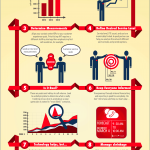What To Do During Your Employees’ First Week To Avoid Losing Them
If a new employee is going to quit, chances are it will happen within the first six months. More than 40% of turnover happens within the first month, and another 10% or more leave before their first anniversary, according to a study by Equifax Workforce Solutions. That means it’s more important than ever to engage them from day one.
“There is a direct correlation between effective onboarding and employee retention and engagement,” says Susan Vitale, chief marketing officer for iCIMS, manufacturer of talent acquisition software. “Ninety-one percent of [first-year] employees are retained in companies that have a formal onboarding program, but of those who don’t, just 50% are retained.”
Bad onboarding costs companies lots of money and job turnover, says Mark Newman, founder and CEO of recruiting software provider HireVue. “If you could make the first 45 days better, you could cut new hire attrition by around 20%,” he says. “When you lose an employee after the first year, it ends up costing you three times the employee’s annual salary to recruit, hire, and train someone else.”
Vitale says she’s heard onboarding horror stories: “Highly engaged people show up on day one and don’t have a place to sit, a computer, or a schedule,” she says. “They’re given papers to fill out. Nobody likes doing it at all much less when they’re excited to start a new job.”
Start Before the First Day
The process should start before the employee’s first day, says Vitale. Instead of using this time to fill out paperwork, allow the forms to be filled out electronically through a portal or printed from a website and manually completed at home. “Employees can do it while they’re watching TV,” she says.
Get employees engaged by including a video about company culture, have the employee’s mentor call to tell them what to expect, and include a video from the CEO that talks about company information, expectations or what happened during the previous quarter, suggests Vitale.
“Employees appreciate getting homework and watching presentation to get acclimated to the company and industry and so they don’t come in blind,” she says. “Share performance objectives, items they’ll be assessed on, core metrics and business objectives. Sharing information about the company prior to day one isn’t necessary but it will go a long way.”
Day One
Keep the first day simple, suggests Ashley White, director of HR for APQC, a nonprofit human resources research organization. “The first day is about the employee having a great experience, going home and telling their significant other or family,” she says.
This means providing “survival” information such as where to park, where to find the coffee bar, and where the restrooms are located, says White. “This is a simple day after which the employee can walk away saying, ‘I have everything I need to get back here tomorrow,’”
Also make sure the employee has a good understanding of the industry, as well as what makes the company unique, says Vitale. “An industry overview is critically important,” she says. “You want your employees to understand what the company does and how you’re different from the competition.”
Assign someone to take the new employee under their wing, says Bill Peppler, managing partner of the staffing agency Kavaliro. “It could be someone who is in the same position as them or someone who started out in the new hire’s position,” he says. “Let them know they can come to this person with any concerns, for guidance, or just to have a friendly conversation.”
And never let them eat lunch alone, adds Peppler. “Often times, the new employee is worried about what they will be doing during the lunch hour,” he says. “This is the company’s time to learn more about them as a person.”
The First Week
It can be tempting to try to provide a lot of information to a new employee on his or her first day, but Vitale suggests stretching it out into a longer period of time. “Don’t be overzealous,” she says. “The reality is that for a lot of new hires, they feel like their head will explode and it’s tough to retain.”
Design the first week to provide the basics, such as time spent shadowing others, says Vitale. “Most importantly they should understand objectives,” she says. “Walk through strategic plans. ‘Here’s what our business objectives are for the year,’ for example. And make sure they understand the larger mission. ‘Here’s why we’re different and how we offer customers something special.’ Give the employee a look at the company through the customers’ eyes.”
White suggests doing a deeper dive into the who, what, where, when, and why of the company. “Communicate high-level information about the organization’s history, structure, and culture,” she says. “Dive into the core mission of the new hire’s team or department, including who they will be working with and how to interact with coworkers.”
Finally, make sure the employee understands the organizational chart. “Who will play a role in their performance,” says Vitale. “Who those key people are and how a new hire can reach out. For example, who do they call about payroll or how do they reach IT for a computer question.”
The First 90 Days
The most crucial part of a successful onboarding process is checking in with the new employee regularly, says Newman. “Managers may schedule formal, daily meetings, or they can simply stop by the employee’s workspace to part of a successful onboarding process is checking in with the new employee regularly,” he says.
Vitale likes to create 30-, 60- and 90-day plans. “The manager should go over expectations and provide touch points,” she says. “This should be a formal sit-down meeting, with the new hire’s overall objectives broken down into digestible chunks.”
At the meaningful intervals, review what works well and what doesn’t. “You can even do things like quizzes, which terrify some, but it’s helpful to understand where training need to be applied further,” says Vitale. “Metrics might change, but make sure you’re checking as the employee ramp progresses.”
During those regular check-ins ask candid questions. Do you feel you understand your job description? Is what you’re doing what you feel you were hired to do? Have there been any surprises?
“This communication and support keeps employees engaged,” says Vitale. “When there is a disconnection it’s often because the employee think things should have been different than they are.”
Fast Company , Read Full Story
(14)














